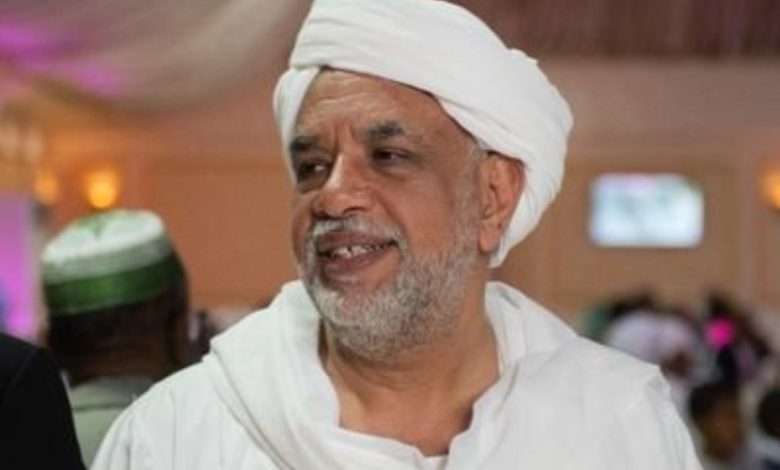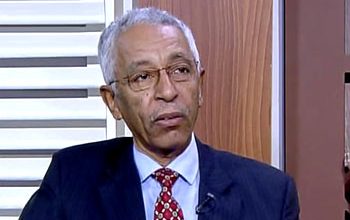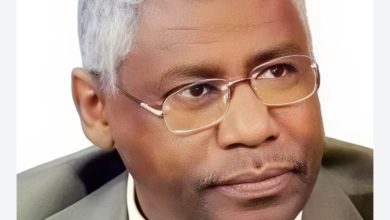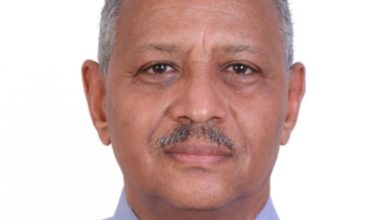Why is Nairobi Embracing the Rapid Support Forces’ Government Project?

By: Jamal Abdel Aal Khogali
Last week, Kenya hosted a series of consecutive meetings aimed at drafting a manifesto to establish a government for the Rapid Support Forces (RSF), either virtually or territorially, depending on the expansion of ongoing military operations across Sudan. Here, we attempt to trace the timeline of events leading up to this step and understand the context that prompted the participants in Nairobi to take such a move.
The initial plan of the RSF’s offensive, which began in mid-April 2023, was to overthrow the Sudanese government and either capture or kill the army commander, as openly stated by the RSF leader before his disappearance and the army commander’s move to Port Sudan.
After the massacre in Geneina in May 2023, the RSF expanded its operations, committing documented crimes of killing, rape, destruction, and looting, leading to the forced displacement of millions from Khartoum, Gezira, Sennar, White Nile, and Blue Nile states. The RSF then settled its foreign recruits in the homes and properties of displaced Sudanese.
The Sudanese army absorbed the initial shock, reorganizing its ranks with thousands of Sudanese volunteers, including former mujahideen, current mobilized forces, and members of armed movements that had previously suffered under the RSF since 2005.
The army gradually regained control over Omdurman, reclaimed its positions, and liberated Sennar and Gezira states as well as large areas in Khartoum. The RSF suffered significant defeats, demonstrating the army’s professionalism and effective military strategy.
At this point, voices within the RSF’s political backers began advocating for the formation of a parallel government based in Darfur, where the RSF holds sway and enjoys social backing. These calls led to fractures within the pro-RSF political coalition, Forces of Freedom and Change – Taqaddum (FFC-T), with some members openly supporting the idea of a parallel government.
Moving to Plan B
With its military campaign faltering, the RSF’s backers shifted to Plan B—establishing a parallel government to prolong the conflict and maintain the RSF’s relevance for future political negotiations.
To execute this plan, the RSF sought to isolate the Sudanese government internationally by leveraging influence over neighboring countries such as Kenya, Ethiopia, the Central African Republic, South Sudan, and Chad—which has become a key hub for military supplies and external arms for the RSF.
This approach increases foreign interference in Sudan’s internal affairs, potentially leading to long-term geopolitical ambitions, including the secession of Darfur and Kordofan, akin to the South Sudan scenario.
Similar events unfolded before, and now Kenya has opened its doors to a Libya or Yemen-style fragmentation of Sudan. Ironically, Kenya itself experienced severe political and ethnic conflicts after its 2007 elections, leading to thousands of deaths and mass displacement. At the time, Kenya firmly rejected foreign intervention in its affairs.
Yet today, Kenya appears to have forgotten this history and is facilitating Sudan’s fragmentation by providing a platform for the RSF’s political agenda.
RSF supporters scrambled to bring together a patchwork of political and social actors to create the illusion of broad-based national support. However, financial incentives played a significant role in securing participants. The contradictions within this coalition delayed the signing of the agreement twice and even led to the cancellation of a planned press conference in Nairobi. Some attendees expressed doubts about the manifesto’s content and future steps, including governance structure, leadership, funding sources, and headquarters location.
Why was the Meeting Held in Nairobi?
The choice of Nairobi for this initiative stems from long-standing ties between RSF leader Mohamed Hamdan Dagalo (Hemedti) and Kenyan President William Ruto. Their relationship dates back to Ruto’s tenure as Kenya’s deputy president, strengthened by joint gold mining ventures in Sudan.
Beyond economic interests, Ruto’s alignment with the RSF reflects a broader geopolitical agenda, as seen in Kenya’s biased stance on the Sudanese conflict since 2023. Ruto attempted to position himself as a mediator within the Intergovernmental Authority on Development (IGAD), despite Kenya not initially being part of the mediation process.
The clearest indication of Kenya’s bias appeared in its latest official statement, which notably omitted any mention of Sudan’s territorial integrity. Diplomatic norms dictate that statements on Sudan typically reaffirm its unity, but Kenya’s deliberate omission suggests implicit support for Sudan’s partition.
Further reinforcing this view, Kenya’s statement emphasized “the Sudanese people’s right to self-determination,” a phrase that historically precedes separatist movements. This framing legitimizes the RSF as a political entity representing a specific group within Sudan and aligns with international efforts to divide the country.
This approach differs sharply from Kenya’s previous mediation in Sudan’s 2002 Machakos/Naivasha peace talks, which were internationally supervised and included both warring parties (the Sudanese government and the Sudan People’s Liberation Movement). In contrast, the Nairobi meeting exclusively gathered RSF representatives and their allies to form a rival government, without Sudan’s official government or army participating.
By unilaterally hosting this initiative, Kenya has compromised its neutrality and weakened its credibility as a mediator. The Sudanese public now widely perceives Kenya as an RSF ally.
Moreover, both Hemedti and Ruto share a history of ethnic-based mobilization. Kenya’s 2007 elections saw widespread ethnic violence, with Ruto’s Kalenjin community among the key players. This led to Ruto being indicted by the International Criminal Court (ICC) in 2010 for orchestrating crimes against humanity. Despite the charges being dropped due to witness interference, Kenya’s history of ethnic conflict closely mirrors the RSF’s tactics in Sudan.
Kenya’s own internal crises—from post-election violence to economic downturns and mass protests against government corruption—have made Ruto susceptible to external pressure. The deteriorating Kenyan economy, marked by inflation and declining purchasing power, has made the government vulnerable to foreign financial incentives. Regional actors have exploited this weakness, offering economic deals in exchange for Kenya’s political support of the RSF.
Who Attended the Meeting, and Who Do They Represent?
With the RSF failing to achieve a military victory, its external backers orchestrated a shift towards forming a shadow government in areas under RSF control.
The political groups attending the Nairobi meeting were largely splinter factions from traditional parties, lacking genuine grassroots support.
For instance, representatives from the National Umma Party disregarded the party’s historic opposition to the RSF. The late party leader, Sadiq al-Mahdi, had denounced the RSF’s crimes in 2014, accusing it of burning villages, committing rape, and integrating non-Sudanese fighters. The Umma Party swiftly expelled its representative who signed the RSF’s charter.
Similarly, the Democratic Unionist Party distanced itself from those who attended on its behalf. Other civilian attendees lacked significant political or public backing.
Some armed movements that had signed the 2020 Juba Peace Agreement but remained neutral in the conflict also participated. However, these groups have weakened due to internal divisions and declining combat strength.
Abdelaziz al-Hilu, leader of the Sudan People’s Liberation Movement – North, was also present. He has consistently opposed all Sudanese governments and demands a secular state. His faction has also suffered internal fragmentation, with many resigning in protest against his positions.
The Final Objective
The RSF and its external allies are using weak civilian fronts to justify their political ambitions, mirroring the Libya and Yemen models. The ultimate goal is to cement RSF control over parts of Sudan—particularly in Darfur, where airstrips can receive foreign military supplies—while stalling the Sudanese army’s advances.
Meanwhile, the Sudanese Armed Forces, backed by an energized public, continue to reclaim territory.
The RSF’s backers are racing against time to establish a physical foothold before losing their remaining strongholds. Their vision: an RSF-dominated enclave, sustained by external funding, serving as a launchpad for Sudan’s long-term fragmentation.



